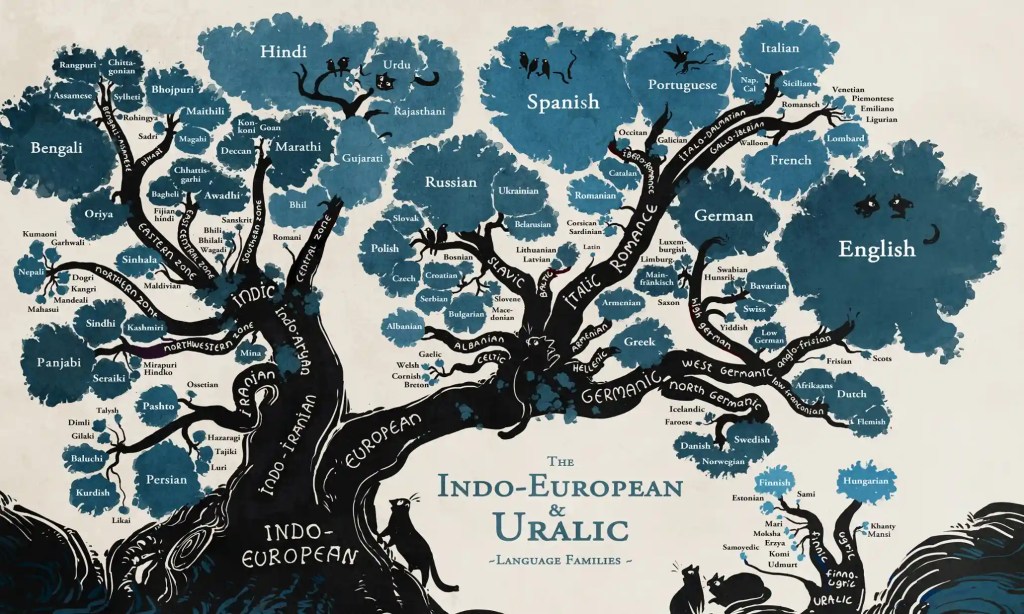Languages are (often) grouped together into families. Language families are made up of languages which are genetically related. This means that they developed from the same language, a “Proto-language”, and may have similar features in terms of their phonological, morphological and syntactic systems.

English is a member of the Indo-European language family. We can say that English is in the Anglo-Frisian sub-branch of the West Germanic branch of Indo-European. This family includes many languages, from Greek in Greece, to Punjabi in Pakistan and India, to Russian in Russia, to Kurdish in a belt from Turkey to Iran and surrounding countries, to Irish in Ireland, as well as most of the other languages spoken in Europe.
There are some interesting relationships that have been discovered between languages. For example, Finnish is related to Hungarian! They are members of the Uralic language family, which has another 35 or so other member languages.
Not all languages are found to be related to other languages. We call these languages “isolates”. This doesn’t mean they sprung up from nowhere, but rather they diversified so long ago that the methods we currently have to determine language relationships aren’t able to track their changes back to a common ancestor shared with any other language.
Below is a list of the 20 largest language families, how many members languages they are proposed to have and where the languages are traditionally spoken.
| Language family | Approximate languages | Where the languages are spoken |
| Niger-Congo | 1,500+ | Africa |
| Austronesian | 1200+ | Asia, Oceania (the Pacific) |
| Trans-New Guinea | 470+ | New Guinea |
| Sino-Tibetan | 450+ | Asia |
| Indo-European | 430+ | Asia, Europe |
| Afro-Asiatic | 360+ | Africa, Asia |
| Pama-Nyungan | 300+ | Australia |
| Nilo-Saharan | 190+ | Africa |
| Oto-Manguean | 170+ | North America |
| Austroasiatic | 160+ | Asia |
| Tai-Kadai | 90+ | Southern China, Southeast Asia |
| Dravidian | 80+ | India [Pakistan and Nepal] |
| Tupian | 60+ | South America |
| Uto-Aztecan | 50+ | North America |
| Torricelli | 50+ | New Guinea |
| Sepik | 50+ | New Guinea |
| Arawakan | 50+ | South America |
| Quechuan | 40+ | South America |
| Na-Dene | 40+ | North America |
| Algic | 40+ | North America |
About World Languages have a great page on language families. The Austronesian language family is particularly interesting because of the enormous geographical area member languages are found.
Maps: World GeoDatasets has some wonderful maps showing the distribution of languages around the world.
